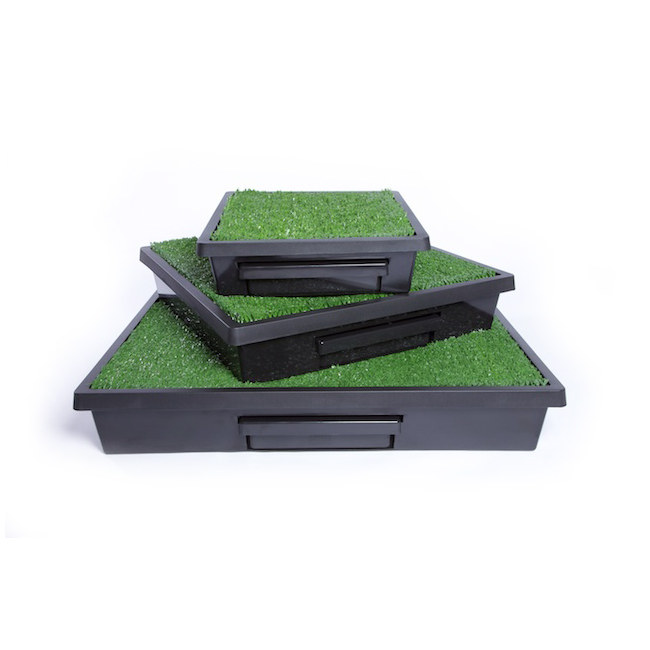If an action is followed by praise or reward, after a period of time, an animal will learn to repeat this action. Training an older dog may take a little more time and patience, but if you invest the time, you will reap the rewards. Some dogs may instantly get it from the word “Go,” while others may need a little extra help. You’ll need to put in some serious time and effort to have a fully house trained dog, but it will be rewarding in the end!
Basic Steps
-
Place your dog where you want him to go at toilet time. Dogs usually need to urinate after sleeping, eating, or playing. Younger puppies may need to urinate as frequently as every 30 minutes.
-
Keep your pet at that spot until he relieves himself.
-
Praise your pet when he does.
-
Repeat!
Frequent Potty Breaks
Before launching into the epic adventure that is toilet training a dog or pup, it can help the process if you put yourself in their shoes.
An 8-week-old puppy, when awake and active, will need to need to go on average about every 20-40 minutes, or after every meal and after every nap. Puppies don't start gaining control of their bladder and bowel functions until they are several weeks of age. This is also the age when puppies start developing preferences for where they will go - a vital stage for learning to go where you want them to go.
Many puppies need 15 minutes of sniffing and circling before they are comfortable enough to go. The sniffing and circling is very important, but this should not become playtime. Keep toys and distractions away from where your pet goes to the bathroom.
Always Supervise
One of the biggest problems with toilet training is not supervising your pet. If your dog has accidents in the house, and if this is allowed to happen often enough, the pup will soon be conditioned to toilet inside, wherever he likes. It’s important to supervise your dog before he’s properly house trained.
When you can’t watch your pup, keep him in a safe, confined area such as the laundry room, bathroom, crate or anywhere with an easy-to-clean floor. This makes accidents easy to clean up, and your dog will be more likely to choose the Pet Loo™ Pet Toilet or pee pad to toilet on, rather than their eating or sleeping spaces.
Be Consistent
The key with toilet training is consistency. Much like humans, all dogs are different, so you may need to adapt your training methods to suit your best friend. Whichever approach you choose, it's important that you stick to it! Toilet training can take up to 2-3 weeks, so don’t give up!
Clean It Up
Clean up accidents with good quality cleaning products that get to the source of the smell and prevent pets from using that spot again. Liquid, enzyme-based products, such as Liquid Ate™ Stain Remover & Odour Eliminator, get to the source of odour or stain to eliminate, not cover up.
Potty Training Tips
-
Take your dog out and wait until he uses the bathroom, then praise and treat.
-
Dogs respond much better to praise than punishment, so you need to find a way to get the behaviour you want, then consistently praise your dog every time you see the right behaviour.
-
When your dog is inside, supervise him at all times. You may need to restrict access to some parts of the house.
-
Watch for suspicious signs, such as circling, sniffing, lifting a leg, squatting, scratching the ground or whining.
-
If you see the signs that your dog needs to go, encourage him to follow you to the designated toilet area.
-
Use enzyme-based cleaners on accidents to prevent your pet from going in the same spot again.
-
Once your pet is reliably using the bathroom, you can add commands for “Outside,” “Toilet,” or “Go Potty.”
Close

![]() Sigma Imports
Sigma Imports